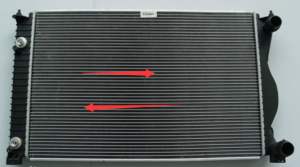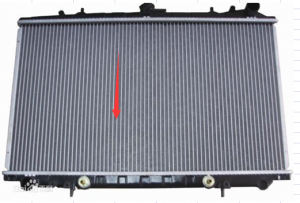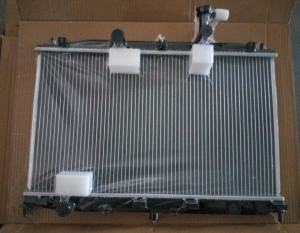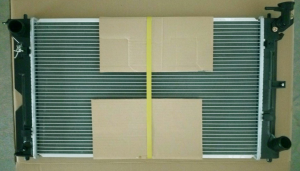Hard knowledge to understand! ! !
The radiator is composed of three parts: the water inlet chamber, the water outlet chamber and the radiator core.
Car radiator materials: There are two main types: aluminum and copper. The former is used for general passenger cars and the latter is used for large commercial vehicles.
Radiator and its radiator core structure: The radiator structure is divided into direct current type and cross flow type
The water inlet and outlet chambers of the direct current radiator are respectively located above and below the radiator core. Because the radiator core is arranged vertically, the height dimension is relatively large.
The cross-flow radiator adopts the horizontal arrangement of the radiator core. The water chambers on the left and right sides are used to replace the water chambers of the upper and lower structures, and the coolant flows horizontally.
The core structure of the radiator mainly includes the tube fin type and the tube band type.


Radiator maintenance
The radiator is an automobile cooling system. In order to avoid overheating of the engine, the parts around the combustion chamber (cylinder liner, cylinder head, valve, etc.) must be properly cooled.
In order to ensure the cooling effect, the automobile cooling system generally consists of a radiator, a thermostat, a water pump, a cylinder water channel, a cylinder head water channel, and a fan.
The radiator is responsible for the cooling of the circulating water. Its water pipes and radiating fins are mostly made of aluminum. The aluminum water pipes are made of flat shape, and the radiating fins are corrugated. Pay attention to the heat dissipation performance. The installation direction is perpendicular to the direction of air flow. The wind resistance should be small and the cooling efficiency should be high.
How the radiator works
The radiator and the water tank together serve as the heat dissipation device of the car. As far as its material is concerned, metal is not resistant to corrosion, so it should be avoided to contact with corrosive solutions such as acid and alkali to avoid damage.
For car radiators, clogging is a very common fault. To reduce the occurrence of clogging, soft water should be injected into it. Hard water needs to be softened before injecting, so as to prevent the generation of scale and block the car radiator.
In the cold winter, the radiator is easy to freeze, expand and freeze, so antifreeze should be added to avoid freezing of water.
In daily use, check the water level at any time, and add water after stopping the machine to cool down. When adding water to the car radiator, the water tank cover should be slowly opened, and the body of the car owner and other operators should be as far away as possible from the water filling port, so as to avoid burns caused by the high pressure and high temperature oil and gas spraying the water port.
ZODI radiator shipping packaging


Post time: May-13-2021
